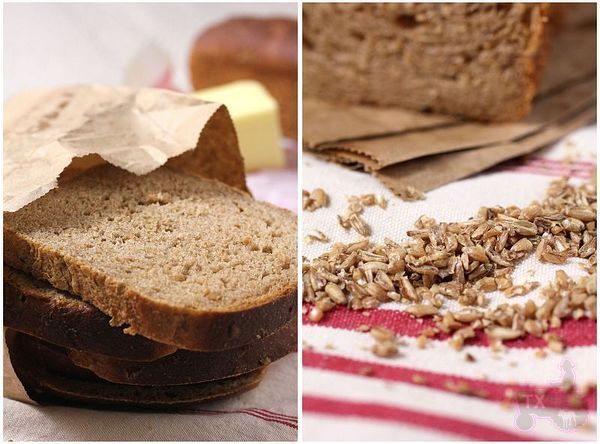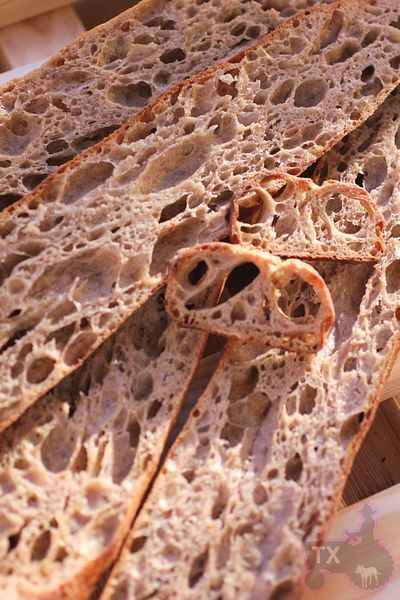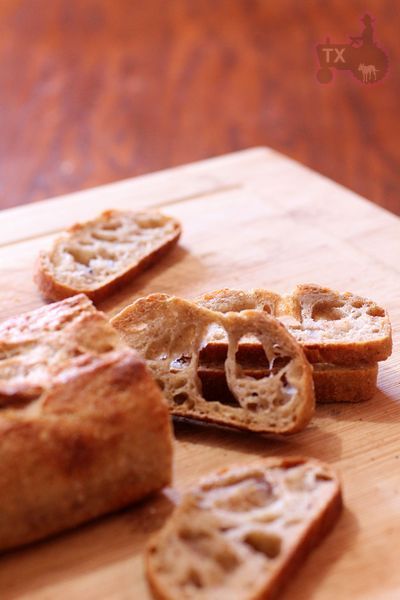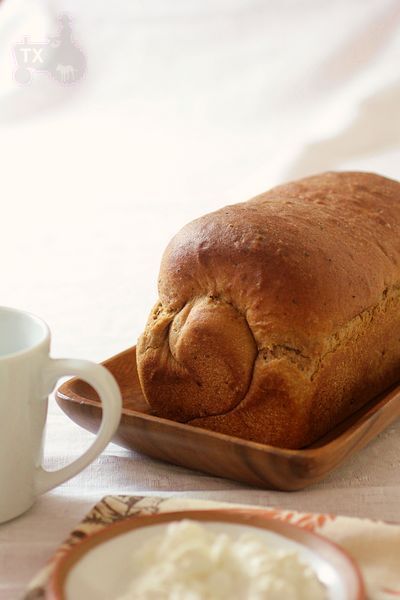txfarmer's blog
Two Quick Rye Breads - one SD, one not
I have been working like crazy lately, with so little time, I like to make rye breads: deliciou and fast.
First, it's the sourdough rye with walnuts from "Bread", however, I followed Hans's modification here, used SD levain only (no dry yeast) and baked smooth side down to get that lovely pattern on top. My hydration was 75%, bulk rise time 1 hour, and proofing time was 100min.
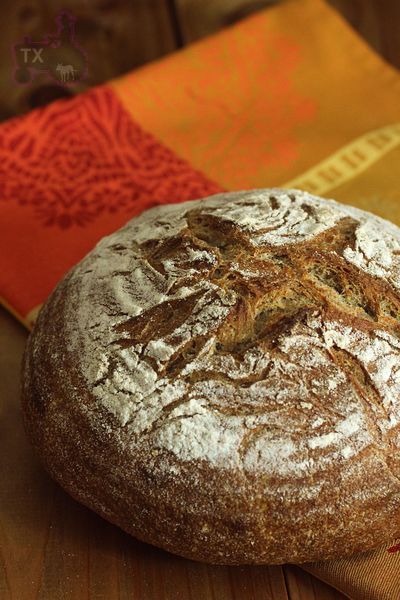
Sourdough English Muffin - full of nooks and crannies

I have been after a good English Muffin since I started baking breads 2 years ago. I tried the BBA recipe, too bread like, crumb is even and soft, good for a dinner roll, not an English muffin. I tried Alton Brown's recipe. Simple, and gives lots of holes. However the crumb is more like a crumpt. In addition, with a very short rise, AB's EM lacks a little flavor.
Sourdough Ciabatta Rolls - no kneading at all

This formula is adapted from Wild Yeast's great recipe here: http://www.wildyeastblog.com/2008/07/28/sourdough-ciabatta-rolls/, with the following changes:
1. Increased the hydration to 85%
- Log in or register to post comments
- 24 comments
- View post
- txfarmer's Blog
36 hours+ sourdough baguette with 100% whole grain - finale, but not the end
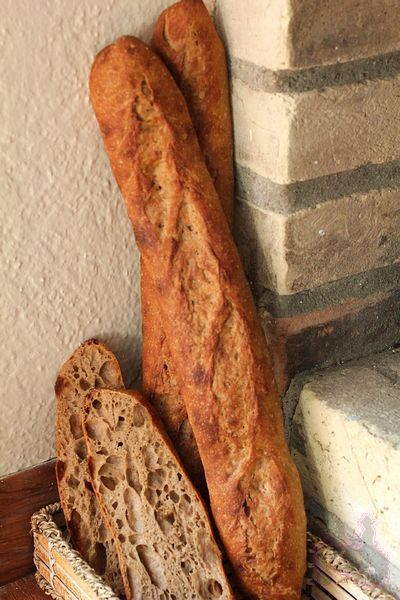
- Log in or register to post comments
- 21 comments
- View post
- txfarmer's Blog
